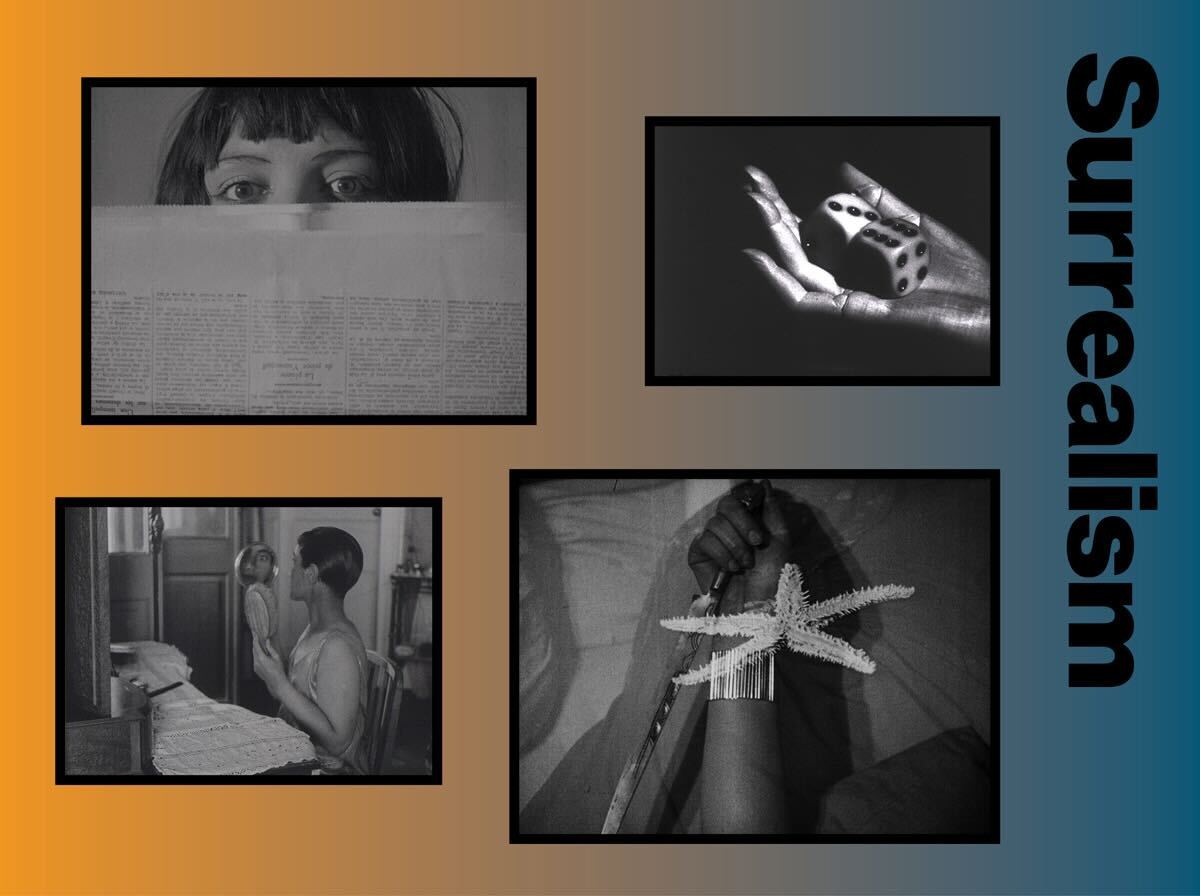

Swirling coils, dancing legs, twitching starfish, and thrown dice are a few of the beguiling visuals in Man Ray: Return to Reason, a recently released collection of four experimental shorts in the oeuvre of the seminal Dada and Surrealist artist.
Last May, the Cannes Film Festival debuted the newly restored 4K versions of the films to honor the centennial of Man Ray’s entry into filmmaking. Following the North American premiere at the New York Film Festival last fall, a wider release by distributor Janus Films begins this month, just as Surrealism celebrates its 100th anniversary.
Le Retour à la Raison (1923), Emak-Bakia (1926), L’Étoile de Mer (1928), and Les Mystères du Château du Dé (1929) comprise these wondrous 70 minutes that are now accompanied by a hypnotic avant-garde score, replete with guitar riffs, percussion, and droning synthesizers, by filmmaker Jim Jarmusch and Carter Logan of SQÜRL.
Created two years after his move to Paris, Le Retour à la Raison (Return to Reason) was produced with the encouragement of poet Tristan Tzara for a Dada evening of performance. Man Ray, adapting his process for creating cameraless photographs (photograms he eponymously dubbed “rayographs”), placed objects directly onto celluloid strips and briefly exposed them to light. He fudged the editing by gluing strips together. In his 1963 autobiography, Self Portrait, Man Ray wrote of his early films, “My curiosity was aroused by the idea of putting into motion some of the results I had obtained in still photography.”

For Le Retour’s opening image, he sprinkled salt and pepper on film “like a cook preparing a roast,” as he once put it. Seasonings, dress pins, and thumbtacks pulsate on screen, sometimes reversed as film negatives. These compositions are interspersed with footage such as a revolving carousel’s lights and a woman’s nude torso turning in front of a window. Despite his attempt to adhere to a credo of randomness, Man Ray’s unrelated shots belie his aesthetic attention to line, pattern, and movement.
At its 1923 premiere, his inexpertly mounted film broke twice, causing an uproar. By the principles of Dada: a success.

Emak-Bakia (Leave Me Alone) similarly is the result of playful experimentation with professional camera equipment, a turntable, crystals, lighting, and distorting mirrors. According to Man Ray’s remarks at the screening, the film was “purely optical, made to appeal only to the eyes.”
A vibrating pattern of white on black is followed by a shot of daisies, alternating between the real and the abstract. The legs of model and artist Kiki de Montparnasse, Man Ray’s lover and muse who posed for many of his iconic works such as Le Violon d’Ingres (1924) and Noire et Blanche (1926), appear in t-strap shoes dancing the Charleston while a Black man’s hand strums a banjo. A crossdresser finishes grooming and looks out at the ocean’s lapping waves. Soon, the camera rotates to invert sea and sky, an unusual move for Ray, who more often used a static camera to capture motion, akin to enlivening still pictures. A bit of trickery ends the film as Kiki awakens to reveal that her closed lids had been painted to look like eyes, echoing the film’s opening of Man Ray’s eye looking through a camera lens.

The most cohesive film, L’Etoile de Mer (The Star of the Sea), features a starfish with undulating appendages, providing an erotic motif amid dream-like sequences. An interpretation of Surrealist writings by Robert Desnos, it also stars Kiki.
Early on, through what appears to be smeared glass, a man and a woman climb a staircase to a bedroom. The woman undresses seductively and lies down. Surprisingly, the man departs. In his autobiography, Ray described his process of obscuring the scene to avoid censorship by using soaked gelatin sheets as a filter, “obtaining a mottled or cathedral-glass effect through which the photography would look like sketchy drawing or painting.”
What follows is typical Surrealist delight: scenes of trains and steamships in motion, newspapers flying in the wind, a woman holding a dagger—later a double exposure with a starfish in a jar, and a second man who leads the woman away from the first, to his dismay.

And finally, there is Man Ray’s most elaborate short, Les Mystères du Chateâu du Dé (The Mysteries of the Castle of the Dice), commissioned by Charles de Noailles, one of the day’s leading patrons of avant-garde film, to record his mansion in the South of France and his patrician guests. With the payment, Ray bought the fastest film and newest lenses available to realize his vision for the project. The blocky exterior of the château informed the theme of the film, which drew inspiration from Symbolist Stéphane Mallarmé’s 1897 poem, “A Throw of the Dice Will Never Abolish Chance.”
The film opens with two men in a Parisian café rolling a pair of dice to determine their actions. Over a bumpy road, they drive to a gray cement estate. Using a dolly, Man Ray provides sweeping shots that examine the various angles of the building, the garden’s outdoor sculptures by Pablo Picasso and Joan Miró, and the rest of de Noailles’s extensive art collection.
Back inside the château, guests arrive and cast the die to determine their recreational activities in and around the well-equipped pool and gymnasium. Everyone wears face obscuring silk-stocking masks “for mystery and anonymity,” according to Man Ray. In striped swimsuits, the guests dive, juggle underwater, and flip into headstands as sunlight casts pleasing shadows around the pool. When night falls, a couple tussle in the garden and then freeze into place, posed like statues in a tableau, as the suspenseful soundtrack builds. A wooden hand holds a large pair of dice in the final closeup shot.
What connects these four films, other than their maker? Serendipity and the interdisciplinary art world of Paris in the 1920s. Through mesmerizing images and unexpected drama, Ray created magic in his filmmaking—another successful medium for the prolific and influential artist.